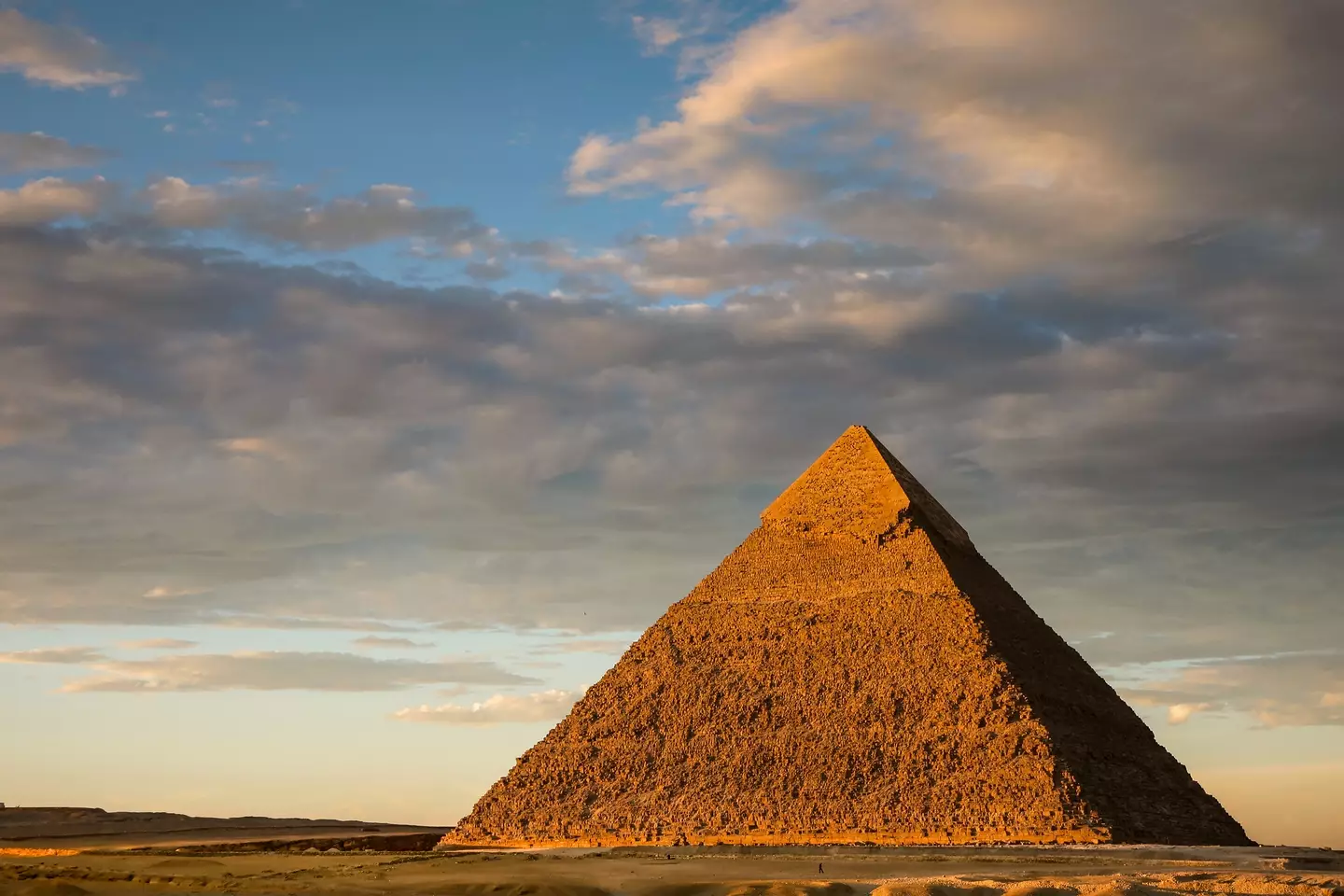
The mystery surrounding the construction of the pyramids has long been covered in theories, with a solidified answer yet to be given.
The most plausible one is a labour force that used 'block-leveraging' on wooden sleds by means of transporting materials. Combine this with their vast knowledge of mathematics, engineering and architecture, and it seems the intelligent Egyptians were well-equipped to build the pyramids.

However, we're still yet to see proof or some solid explanation as to how exactly the Egyptians built the structures in such conditions - and lack of heavy machinery.
Advert
However, a recent discovery from space suggests that pyramids were built using water.
Dr Eman Ghoneim used radar satellite data from space to discover a landmark on an ancient branch of the River Nile, describing it as an 'invisible world of information beneath the surface'.
Ghoneim determined it to be a dried-out waterway that once ran through Giza from the Nile Valley.
Ghoneim believes this waterway was once used to transport the materials that were used to construct the pyramids.
Advert
Stretching approximately half a kilometre in width - equivalent to the River Nile's width today - Ghoneim reported to IFLScience that the waterway was a 'major branch'. This challenges the original notion that the construction workers used sledges to transport the construction materials.
Presenting her research to the 13th Congress of Egyptologists earlier this year, Ghoneim has potentially solved the mystery of the construction of these ancient pyramids that's had us scratching our heads for centuries.

Loosely labelled the Ahramat Branch, the obsolete waterway is found to have run all the way from Giza to Faiyum, passing through 38 different pyramid sites.
Advert
And the location of the pyramids seems to support this. Ghoneim mentioned that the pyramids could have acted as 'ancient ports' as she explained that they are conveniently positioned 'exactly at the bank of the branch'.
One example of this is a particular area in Cairo where there is a large abundance of pyramids. Its short distance to the waterway would suggest that the nearby water would have transported the materials and building blocks needed to build the Cairo pyramids.
However, the research isn't so conclusive. The problem lies in determining whether the river was active during the Old and Middle Kingdoms (around 4,700 years ago). If it wasn't, then the river probably wasn't used to help build the pyramids by means of transportation.
Ghoneheim is hopeful that the research can offer a glimpse into potential Egyptian towns that may have disappeared once the River Nile naturally shifted course.